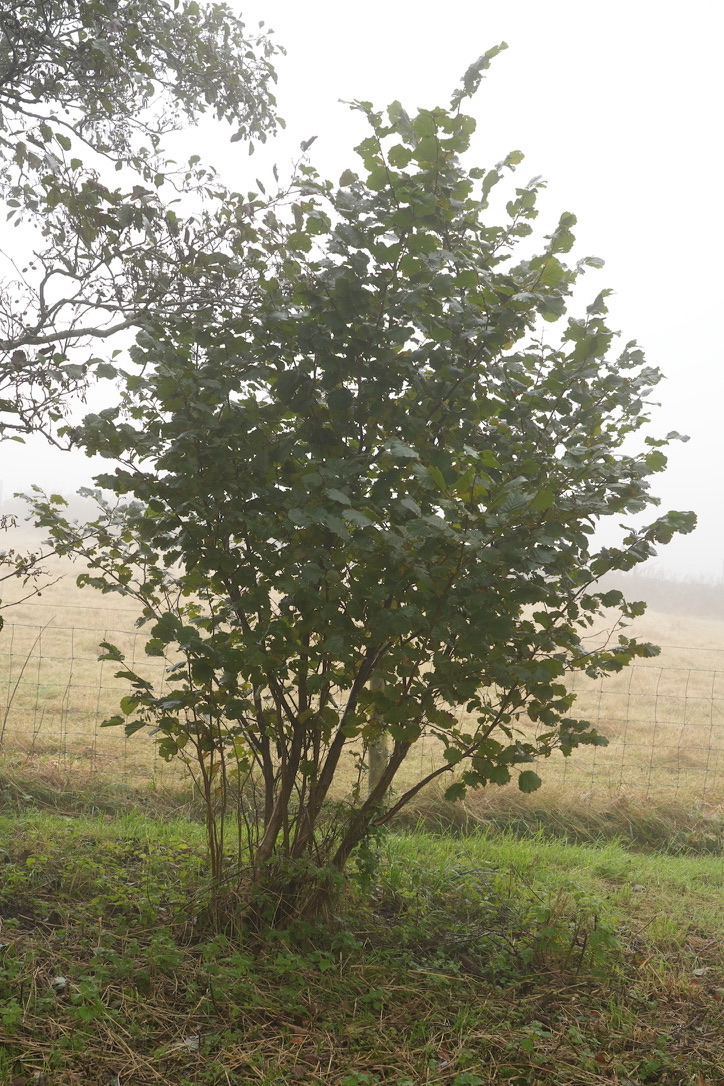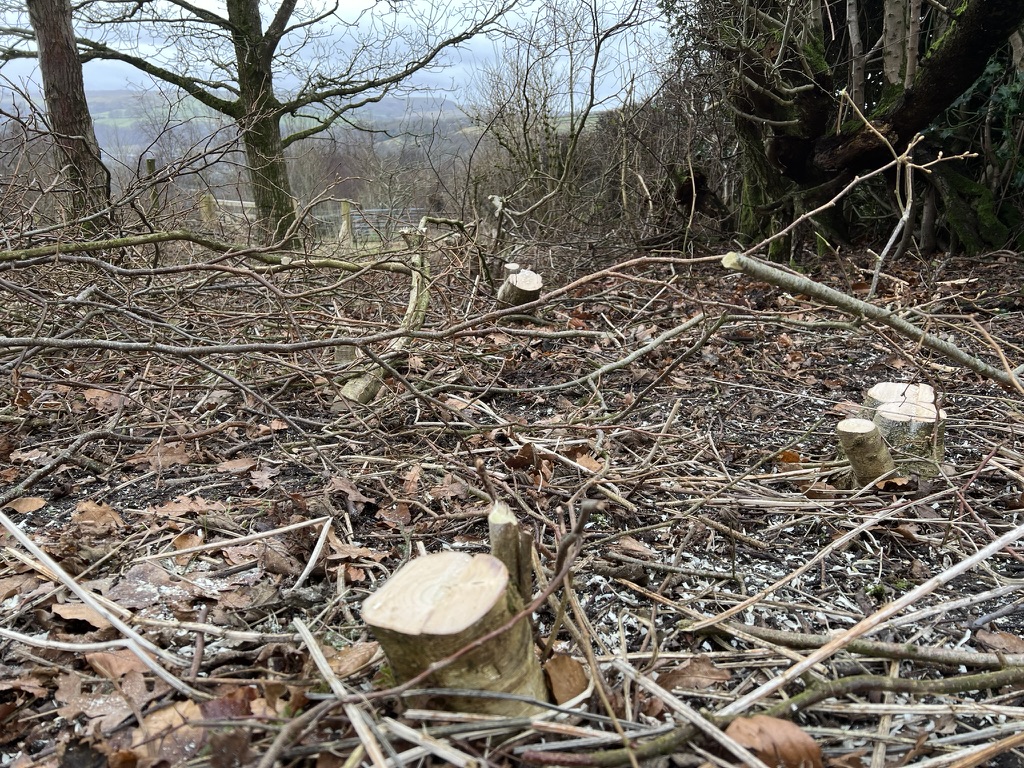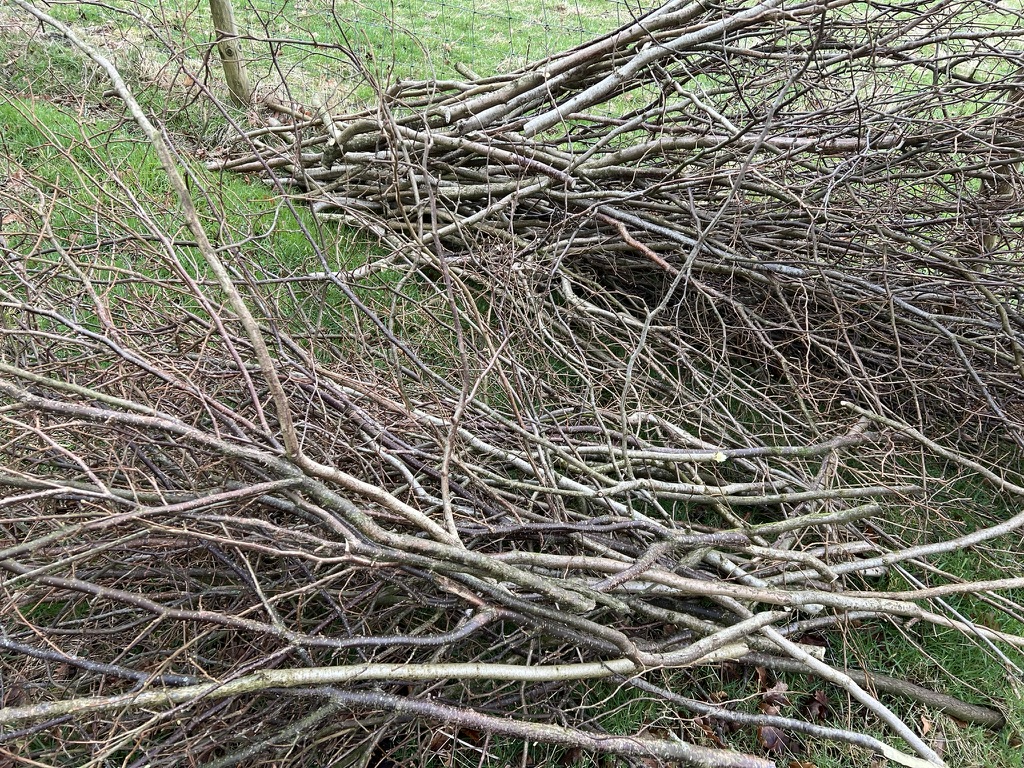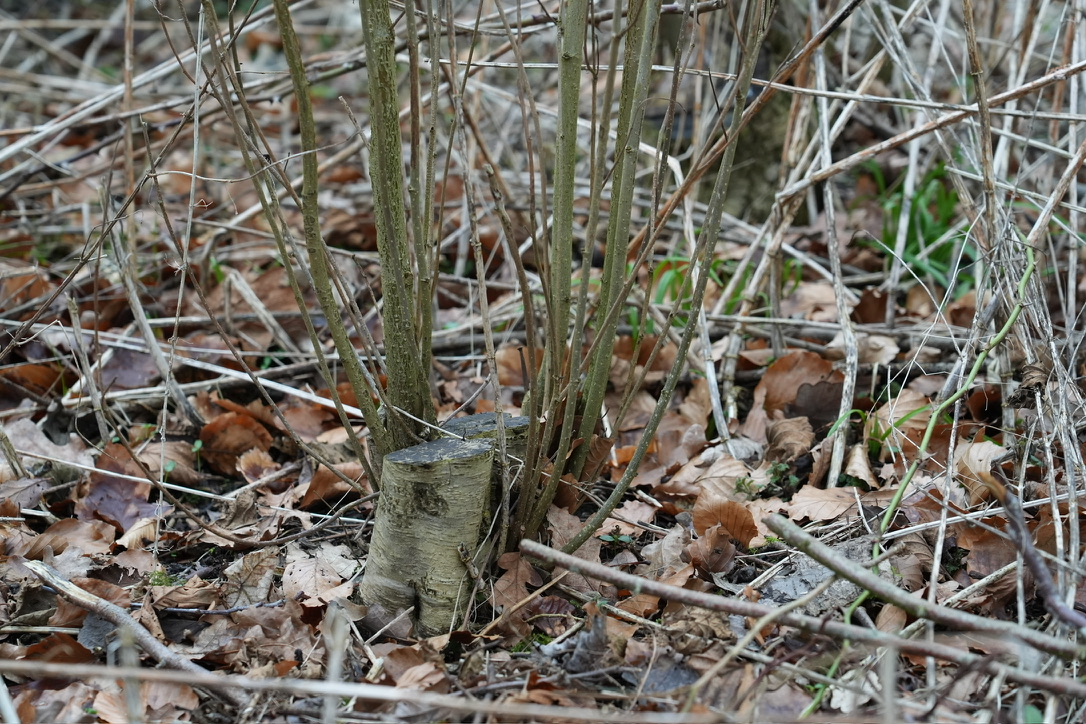Hazel’s true name is Corylus avellana, it’s one of our best known wild trees all across Europe. It’s been closely tied to humans because of its use in building, fencing and thatch. To grow stems that are straight and roughly the same size, our ancient ancestors struck on the woodland craft of coppicing, to cut the stem to the ground encouraging new young shoots to grow. They would have seen this happening naturally when large herbivores broke or ate the plants, causing regrowth. According to the Woodland Trust, coppicing hazel can extend its natural life from 80 years to many hundreds of years.
Join my Wild Way newsletter for regenerative growing advice
As gardeners, we can use this same process to grow free and sustainable supports for growing plants up. Coppicing may seem brutal but it creates a mixed habitat for wildlife, where you can have full grown trees, areas recently coppiced allowing light in for wildflowers and grasses, mid-grown hazel for dappled habitat. Trying to create a cycle so there is always one of each habitat. In small spaces you could have one hazel and take only a few stems each year, rather than completely coppicing the plant. Have a play, they’re tough!
1) coppicing hazel quick start guide
- How often to coppice? Every 5 – 7 years per plant, though you could take a stem or two every other year instead of taking them all at once.
- When can can hazel be coppiced? Hazel can be first coppiced when it is vigorous and usually when the main trunk is at least 5cm in diameter. In future years the stems don’t have to be as chunky (discussed more below). It will take a number of years for a new hazel to establish and be ready.
- How often can hazel be coppiced? Usually hazel can be coppiced every 5 – 7 years. Though it depends what you are going to use it for. It takes about that time to grow 2.5m+ tall bean poles, longer for fence posts.
- How far apart do you plant hazel for coppicing? 2.5 metres is a good distance. Though our farm came with hazel planted much closer together at about 1m and they are so far, doing OK. For long term growing, more space is better. A coppiced hazel as you can see below, grows to about 1.5-2m wide, as a guide.
- How many hazel trees do you need? You could just have one plant and coppice what it produces. You can thin out some stems every year or two as you would another shrub, that should work at encouraging new regrowth. However, the more you have, the more supports you can grow, and you can coppice on a cycle. For instance, if you have three hazel plants, you could coppice on a cycle of one every two years. Multiply this up for whatever you need.
(Can I add anything else to this section to help you? Please ask me in the comments below.)
2) ensure your hazel is ready

I’m often asked how do you know when a tree or shrub is ready to be coppiced? There are some basic rules to follow that are quite sensible, such as when the plant has grown for five years or more, or when the stem is at least 5cm in diameter. While that is useful, I think the better advice is to stand back and look to see if the plant looks established and vigorous. Do you think it has a strong root system below ground? This is harder to judge of course, but when you look at plants, you can see strong growth in spring, vigorous happy leaves. In the case of hazel, for the first time it’s coppiced, I would definitely wait until the stem is at least 5cm in diameter and over head height, 2 – 2.5m tall. In the future, once the cycle of regrowth has been started, you can cut the new stems when they are smaller as the root system will be well established.
3) cut to roughly 5cm above ground in winter

When you do cut, you want to cut the stump to be at 5cm or less above the ground, and this can be done with a hand saw or chainsaw (only use a chainsaw with professionaly training and a certificate as they are extremely dangerous). This is to encourage regrowth from ground level, which will increase the number of new stems in the future. Only cut hazel when it is dormant with no leaves, ideally in the middle of winter.
And… well, that’s it! It’s pretty easy to do. Now you just wait.
4) gather your hazel stems into different size piles

This will make it easier to sort and tidy up ready for use on the veg plot or allotment. In the top pile I have the 2.5m+ long big bean poles for climbing beans. I’ll tidy these up, removing some of the side shoots. In the foreground are the smaller 1m – 1.5m long twiggy bits I’ll use for growing peas and mangetout. I’ve found hazel lasts a maximum of two years as supports before the sticks become too brittle, snapping easily. At which point you can pile up for hedgehogs and other wildlife. Or, if you are in a remote place, use for kindling.
5) regrowth

This is a hazel I coppiced the previous year, and you can see how many new stems are shooting out of it.













